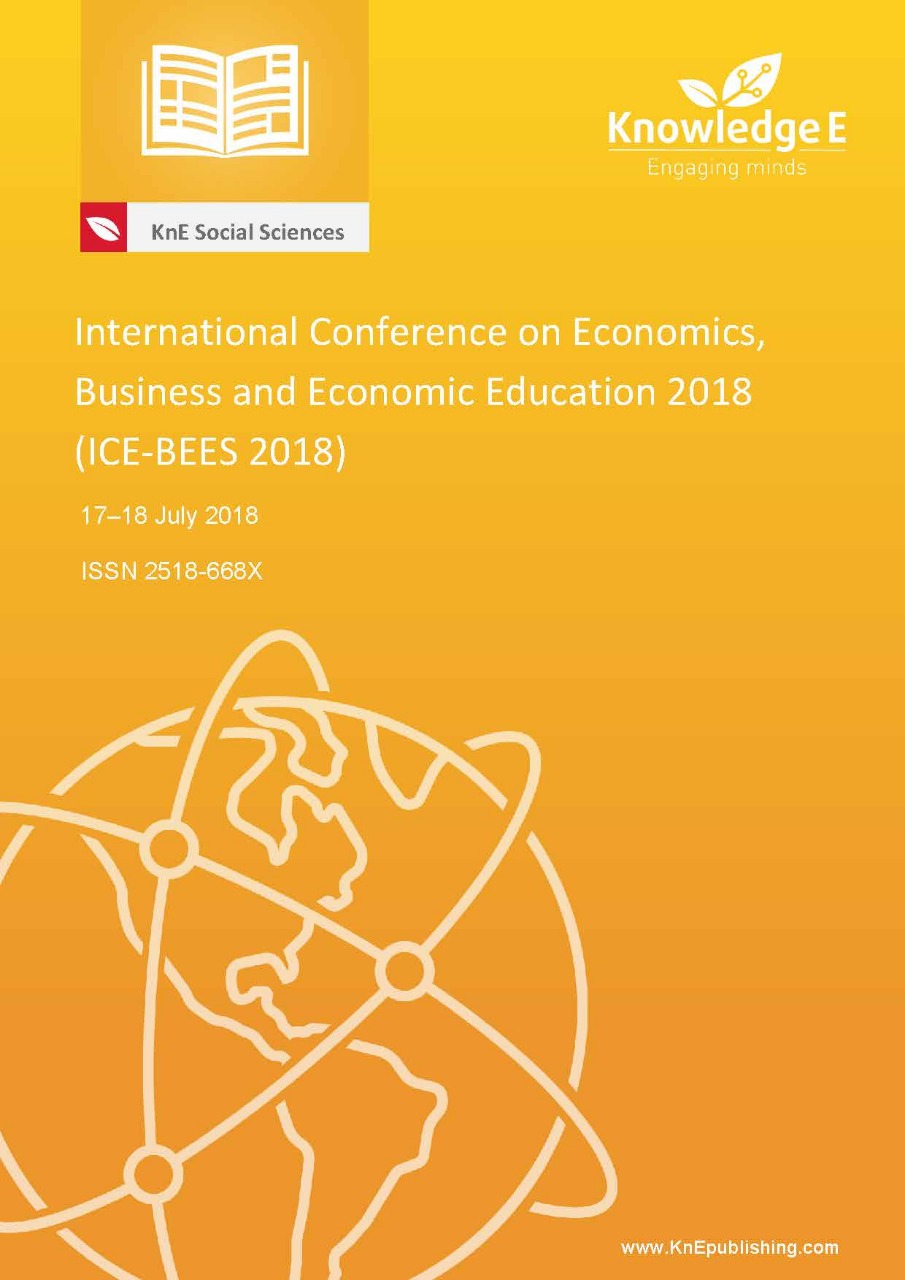Government Expenditure and Poverty in Indonesia
DOI:
https://doi.org/10.18502/kss.v3i10.3125Abstract
Poverty is a complex and multidimensional problem, so that the necessary effort or Government policies that is sustainable and synergistic to reduce the number of poor population. This study aims to analyze the determinants of poverty in Indonesia based on economic and social indicators. It is using linear regression analysis tool by using multiple Fixed-Effects Model (FEM). The results of the study found that economic growth has a positive effect against poverty in Indonesia. While the government are spending, per capita income, labor force participation and effect negatively to poverty in Indonesia.
Keywords: poverty, economic growth, expenditure, labor force, income per capita
References
Miranti, Riyana. Vidyattama, Yogi. Hansnata,Erick. Cassells, Rebecca & Duncan, Alan. (2013). “Trends in Poverty and Inequality in Decentralising Indonesia”. dalam OECD Social, Employment and Migration Working Papers. No. 148. OECD Publishing. https://www.oecd-ilibrary.org/docserver/ 5k43bvt2dwjk-en.pdf?expires=1531184131&id=id&accname=guest&checksum= 19A5D56D4A79505195403DD76DA5EC72
Norton, Seth W. (2002). Economic Growth and Poverty: In Search of Trickle-Down. Cato Journal. Vol. 22 issue. 2 pp. 263-275.
Royce, Edward Cary. (2009). Poverty & Power: The Problem of Structural Inequality. United States of America: Rowman & Littlefield Publishers, Inc.
Todaro, Michael P. and Stephen C. Smith. (20114). Economic Development The Pearson Series in Economics.
Mishkin, Frederic S.(2011) The Economics of Money, Banking and Financial Markets. 4th Canadian ed. Pearson Canada Inc., Toronto, Ontari.
World Bank. 2012. World Development Indicator 2012. Download: http://data. worldbank.org/data-catalog/world-development-indicators
Central Bureau of Statistics (BPS). 2015. Data Laju PDRB. Diunduh dari www.bps.go. id. 2015a. Data Jumlah Penduduk Miskin. Diunduh dari www.bps.go.id.
Sen, A. (2009). The Idea of Justice. London, Allen Lane.
Davis, E.Philip and Martinez, Miguel-Sanchez. 2015. “Economic Theories of Poverty”. National Institute of Economic and Sosial Research. Download: https://www.jrf.org. uk/report/economic-theories-poverty
Son, Hyun H. and Nanak Kakwani. 2004. “Economic Growth and Poverty Reduction: Initial Conditions Matter”. dalam International Poverty Centre. Working Paper No.2 Agustus. United Nations Development Programme. Diunduh dari www.undp.org/ povertycentre.
Fields, G. S. (1989). Changes in poverty and inequality in developing countries. World Bank Research Observer, 4(2), pp. 167-185.
World Bank. 1990. World Development Report 1990: Poverty. New York: Oxford University Press. © World Bank. https://openknowledge.worldbank.org/handle/10986/5973 License: CC BY 3.0 IGO.
Roemer, Michael and Gugerty, Mary Kay(1997). Does Economic Growth Reduce Poverty? Technical paper. CAER II Discussion Paper No. 5 April 1997.Harvard Institute for International Development https://www.researchgate.net/publication/ 237498216_DOES_ECONOMIC_GROWTH_REDUCE_POVERTY_Technical_Paper
Birowo, Tejo. 2011. “Relation Between Government Expenditure and Poverty Rate in Indonesia”.Comparison of Budget Classifications Before and After Budget Management Reform in 2004. Graduete Scool of Asia Pasific Studies Ritsumeikanasia Pacific University Jepang. Download: r-cube.ritsumei.ac.jp/repo/repository/rcube/2586/Tejo%20Birowo.pdf
Fan, Shenggen. 2008. Public Expenditures, Growth, and Poverty: Lesseons from Developing Countries. The Johns Hopkins University Press Baltmore, United States of America: International Food Policy Research Institute. Diunduh dari www.press. jhu.edu
Gujarati, D.N. (2012). Basic Econometrics. Tata McGraw-Hill Education, Noida.

